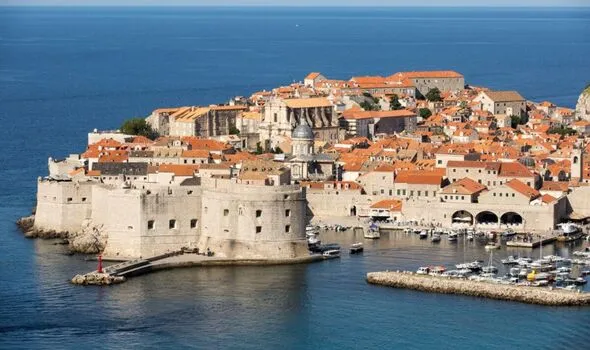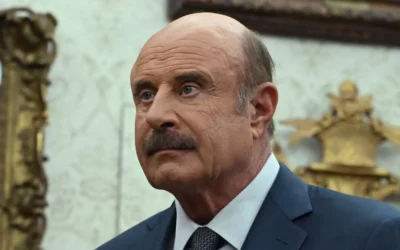Crisis in Croatia as Italian and German Tourists Abandon Country
For years, Croatia has been a favored destination for European tourists, especially those coming from Italy and Germany. Known for its stunning coastline, medieval towns, and affordable prices, the nation has seen a significant influx of visitors during the summer months. However, recent trends suggest a worrying shift in the tourism landscape that could spell trouble for the Croatian economy.
The Rise and Fall of Croatian Tourism
Tourism has undeniably played a pivotal role in Croatia’s economic revival, especially following the civil war in the 1990s. The Croatian coast, dotted with UNESCO World Heritage sites such as Dubrovnik and Split, enjoyed a boom, with visitors basking in the sun and enjoying the omnipresent local cuisine. With lower hotel rates and a relatively affordable cost of living compared to other Mediterranean hotspots, tourists flocked to the picturesque villages that line the Adriatic Sea.
However, this overwhelming success has come at a cost. Overtourism has rapidly challenged the sustainability of the country’s infrastructure and natural landscapes. While local businesses thrived, many began to feel the pressure of increased foot traffic and environmental degradation. As a result, tourists began to complain about overcrowded beaches, inflated prices, and diminished experiences.
Italian and German Tourists Leave
This summer, Italian and German tourists—the backbone of Croatia’s tourism—suddenly began to abandon the country en masse. Reports indicate that bookings from these nationalities have dropped significantly, leading to beach resorts struggling to fill their rooms. There are a myriad of contributing factors to this abrupt shift.
- Inflation and Rising Costs: Post-pandemic inflation has affected countries worldwide, and Croatia is no exception. Many tourists have noted a stark rise in the costs associated with travel, from restaurants to rental cars. Prices that were once enticingly low have surged to levels that are difficult for average tourists to stomach.
- Environmental Concerns: As travelers become more conscious of their carbon footprint, some have opted to reroute their vacations to less crowded, more sustainable destinations. Croatia’s overexposed coastlines have led tourists to consider alternative locations in the Balkans where nature remains unspoiled.
- Cultural Squabbles: There have also been reports of increasing tensions between locals and visitors. As Croatians voice their frustrations about not only the environmental impacts but also the cultural commodification of their towns, this has created an awkward dynamic that continues to push tourists away.
Impact on the Local Economy
The sudden departure of these key demographics has sent ripples of worry through local business owners and government officials alike. Tourists contribute significantly to Croatia’s GDP, accounting for around 20%. The economic implications of this decline are severe, especially for small businesses that depend on a constant flow of customers to stay afloat.
Hotels, restaurants, and tour companies report a notable downturn in business, pushing many to consider layoffs or even shuttering operations. Further, with less tourist revenue, municipalities face budget constraints, limiting essential services and infrastructure improvements.
Local Voices
The frustration among business owners is palpable. Monta Zorić, who runs a beachside ice-cream shop in Split, shares, “This year, we have seen fewer visitors compared to last year. We used to have long queues; now, it’s quiet. People are opting for the coast of Greece or Italy instead.” Her experiences are echoed by countless other shopkeepers, who find it increasingly difficult to keep their businesses running under current conditions.
A Call for Action
The Croatian government has taken note of the changing tourist landscape and is working on strategies to attract visitors once more. However, experts argue that a balance needs to be struck. Policymakers will need to implement sustainable tourism initiatives that protect the environment while still catering to the needs of visitors.
A primary suggestion involves diversifying tourist experiences to minimize stress on the heavily trafficked regions. Promoting less visited areas of Croatia, such as the Osijek region or the Slavonia countryside, could help distribute tourist dollars more equitably across the nation.
Enhancing the Visitor Experience
To appeal to returning tourists, the Croatian government is also considering revising the pricing structures in tourist-heavy zones. Measures could include incentives for staying in off-peak hours or more affordable packages that deliver better value for money. At the same time, cooperative measures with local businesses to improve the quality of services without sacrificing local culture can lead to a more positive tourism experience.
Future Outlook
Tourism experts suggest that Croatia still has every potential to recover from this downturn, given its beautiful landscapes and vibrant culture. The key lies in learning from the past to foster a more sustainable tourist model moving forward. If handled correctly, Croatia can maintain its status as a beloved European destination while also preserving the livelihoods of its citizens and the integrity of its cultural and natural resources.
Despite the current challenges ahead, many believe that with adaptive strategies, Croatia can find a viable path that redefines its tourism industry. For now, it is a wait-and-see game as local businesses hope for a revival in interest as they look forward to next year’s season.
Conclusion
The ongoing crisis in Croatian tourism highlights a crucial point for popular destinations worldwide. Striking a balance between offering affordable travel experiences and protecting local communities and environments presents a complex challenge that many nations will have to confront in the future. It is clear that the success of past tourism strategies cannot sustain itself without adaptation and resilience.
As tourist patterns shift and preferences evolve, Croatia has a unique opportunity to emerge as a modern leader in sustainable tourism. Whether or not this strategy succeeds will significantly shape the future of Croatia’s coastal charm and its economy.







